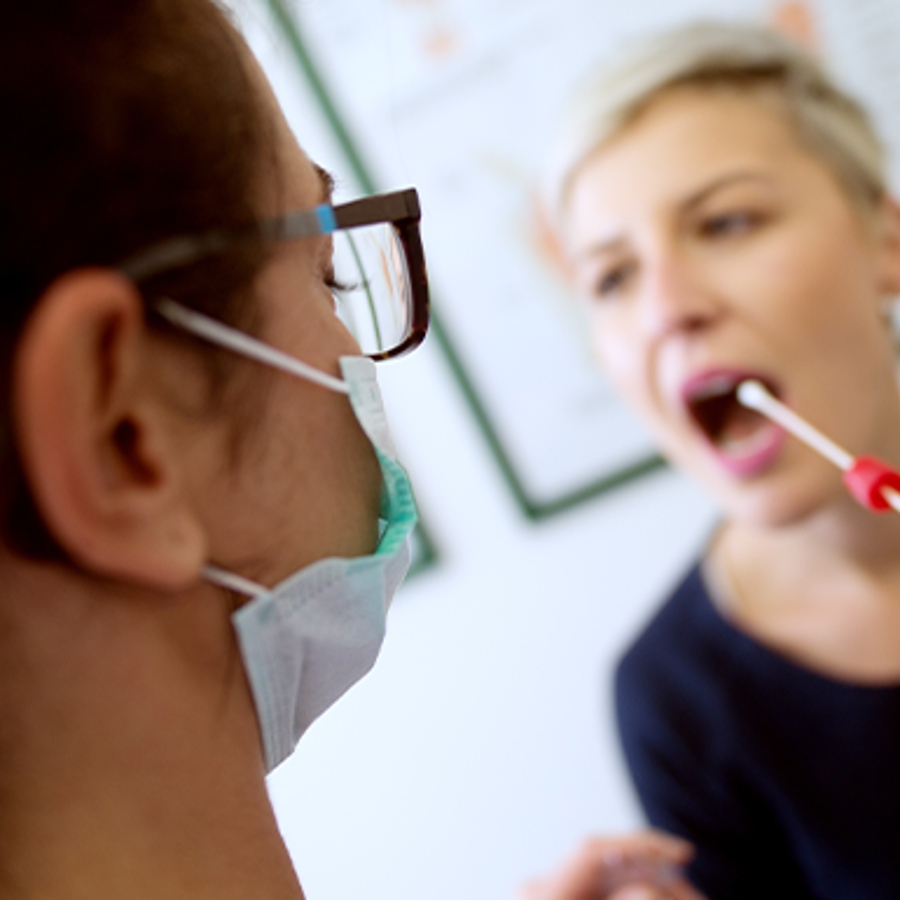
Can genetic testing determine if my cousin is actually my cousin?
June 5, 2013

- Related Topics:
- Relatedness,
- Consumer genetic testing,
- Paternity tests,
- Genetic testing,
- Recombination
A curious adult asks:
"I am wondering what kind of a test I could use to determine whether or not someone who I always thought was my cousin is actually my cousin. I am male and she was (supposedly) my father’s brother’s daughter; however I have overheard aunts and uncles hinting that she may not actually be my uncle’s daughter. How could I determine the truth?"
For this kind of question, none of the standard relationship kinds of DNA tests would be very useful. Because your cousin is female and you are a male, you can’t use a Y chromosome test. And because the two of you are related through brothers, you can’t use a mitochondrial DNA (mtDNA) test.
No, you need a test that will compare each of your DNAs at lots of different places scattered throughout all of your chromosomes. Most of the tests like this weren’t set up to directly answer the kind of question you’re asking. But they can give you an answer nonetheless.
The two companies I have experience with are 23andMe and Ancestry.com. Either will be able to tell with pretty high confidence if the two of you are related at or around the level of first cousins or not for around $99 per person.
There are a couple of things to keep in mind though. First off, the test cannot distinguish between your uncle being the father and one of his brothers being the father. It can only say whether you are first cousins or not.
Second, the test might not give as conclusive an answer if her real dad was a close relative of your dad. A cousin of your dad or someone closer could confuse things enough that you wouldn’t get a definitive result about being first cousins. You’d look related but you wouldn’t necessarily be able to nail down whether or not the two of you were first cousins.
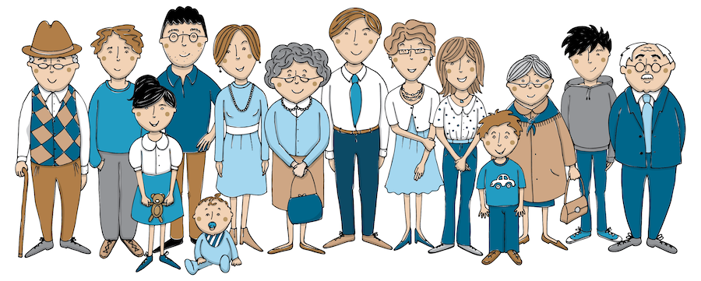
But if the choice is between your dad’s brother and an unrelated man, then the test will be able to tell if you are related at or around the level of first cousins or not. Now all that is left is choosing between these two companies (or maybe a different one if you can find it). Which company you choose depends on what other information you’d like besides your relationship to your cousin.
Ancestry.com is a great resource for creating your family tree and tracing relatives back to known people. DNA testing is just one of many tools you can use in this pursuit.
23andMe can help you find relatives too (without the added tools to take things further), but it can also give extra information about what your DNA says about your traits, disease risks and so on. This sounds great but keep in mind that the 23andMe information is only as good as our understanding of genetics, which is not that great yet. Still, it can tell you some important information as long as you remember to keep in mind that a whole lot of it is preliminary. (Click here for a longer discussion on the pluses and minuses of having this information.)
Of course you should keep in mind a few other key points about using these tests as paternity tests. First, you need to get your cousin to do it with her full knowledge that this is what you are testing for. And secondly, you need to realize that there is nothing to keep your cousin from using someone else’s DNA in the test. In paternity testing speak, there is no chain of custody control.
Also, think about whether finding this out is worth the potential problems it could bring up for the family. This kind of thing can cause a lot of strife when they reveal unexpected knowledge. It might even be worth a chat with a genetic counselor before embarking on this journey. (Click here to find a genetic counselor near you.)

If you do decide to go ahead with this, then you’ll probably be able to tell if the two of you are related at first cousin level or not. Now it is up to you to decide whether it is worth finding out or not.
What I’ll do for the rest of the answer is go over how these tests can figure out if the two of you are related. As you’ll see, it has to do with the fact that big chunks of DNA tend to get passed on together from generation to generation.
Travelling Blocks
Traditional paternity and relationship tests compare 15 or 20 different areas of DNA to try and figure out who is related to whom. This works fine for paternity when mother, father and child are tested and is even OK most of the time for father and child.
But these tests that look at so little DNA are not nearly so good at determining relationships when you aren’t looking at direct descendants like father and child. They can have trouble seeing if two people are brother and sister, let alone first cousins!
To be able to see these kinds of relationships, you need to look at lots of different spots. And this isn’t just so we have more spots to look at. No, because of how we inherit our DNA, what we need is for there to be so many spots that we can follow them in clusters instead of individually. Let me explain why.
Our DNA is packaged into long bits of DNA called chromosomes. Most people have 23 pairs of these chromosomes. One set comes from mom and the other from dad for a total of 46.
In a simple world, we’d get one of each of mom’s pairs and one of each of dad’s pairs to get our 46 chromosomes. Here is what this might look like for a single pair of chromosomes:
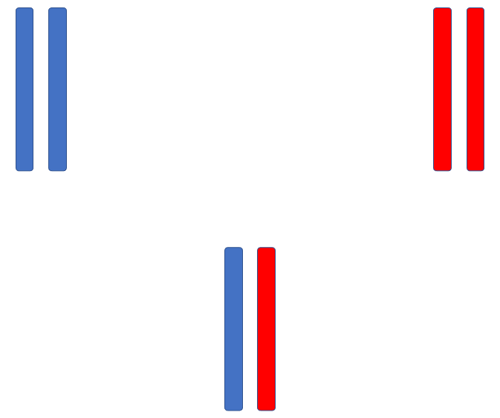
One parent has a blue pair and one has a red pair. The child got a blue from one parent and a red from the other. Then we’d simply follow chromosomes and see if you and your cousin share a few. Unfortunately, nothing in biology is so simple.
What actually happens is more along the lines of the image below. To make things easier to follow, I’ve colored each of the parents’ chromosomes a different color:
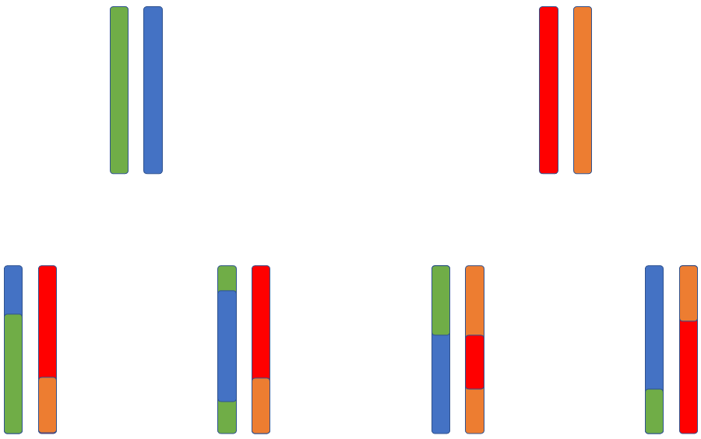
So one parent has green and blue and the other has red and orange. What I have shown is four different possible children.
As you can see, we don’t get one of mom’s and one of dad’s chromosomes from each pair. What we get instead is a brand new, never before seen mix of the two in the pair. This DNA mixing and matching goes by the name of recombination.
What these tests do is follow these chunks of swapped DNA. The more related you are, the more chunks of DNA you’ll share.
This is why we need to look at so many different spots on the DNA. So we can follow big stretches of DNA instead of just looking at each spot in isolation.
Here is one way to show you what I mean. The image below is based on actual 23andMe data from a few years ago and shows how someone is related to a grandpa and a cousin:
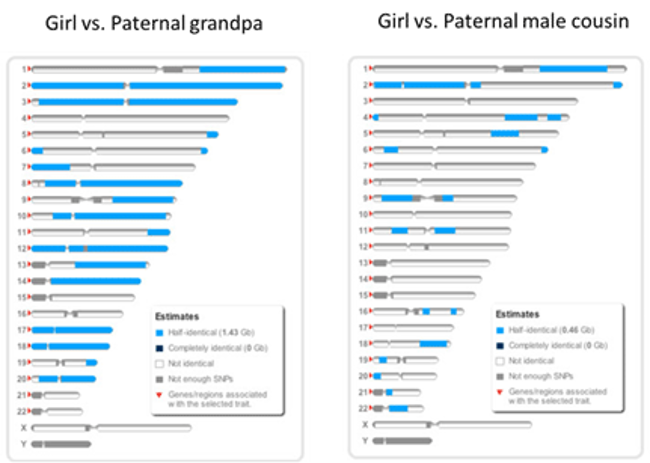
As you can see, the woman being tested shares more DNA chunks with her grandpa than she does with her first cousin. This makes sense since people are on average more related to their grandparents than they are their first cousins. Unrelated people would share none of these chunks.
So you and your cousin’s DNA would look something like the cousin one here. And if you were unrelated, you wouldn’t see any shared boxes. (Distant relatives might show only one or two.)

Author: Dr. D. Barry Starr
Barry served as The Tech Geneticist from 2002-2018. He founded Ask-a-Geneticist, answered thousands of questions submitted by people from all around the world, and oversaw and edited all articles published during his tenure. AAG is part of the Stanford at The Tech program, which brings Stanford scientists to The Tech to answer questions for this site, as well as to run science activities with visitors at The Tech Interactive in downtown San Jose.
 Skip Navigation
Skip Navigation
